Increase Your Conversion Rate with Better Product Copy
We all know good copy when we see it. It grabs your attention and pulls you right into the product.
Take Apple’s AirPod copy. Apple lets you know straight away that this product is completely magical.
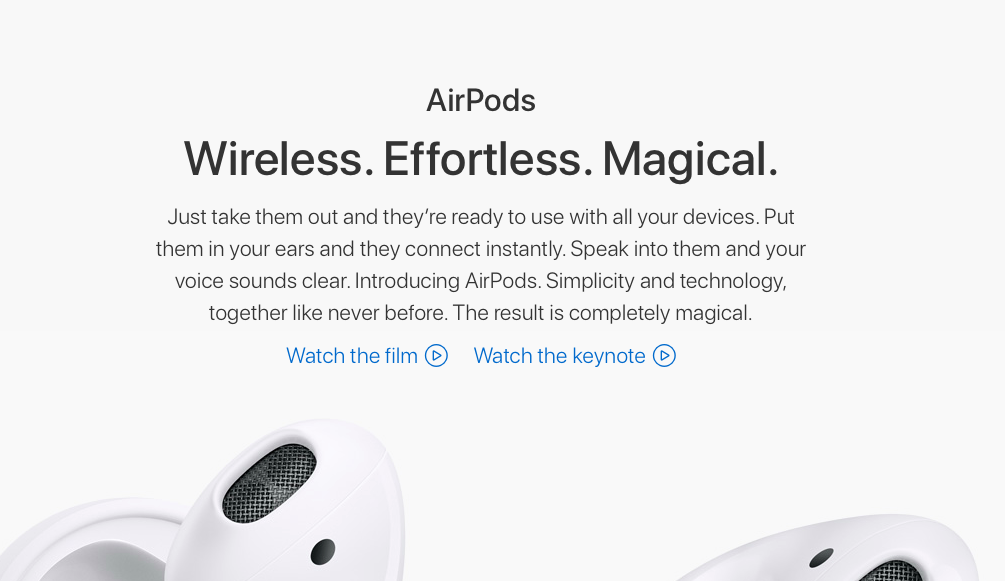
Good copy doesn’t just describe what a product does. Good copy instantly communicates the value of the product to whoever is reading it. It makes you feel like “this is something I need.”
The copy on your website is often the first thing a potential user sees. It’s their first interaction with your brand and your product, so it serves you well to make sure it’s a good one.
To do that, you don’t need a formal writing background. No one is expecting you to have an English degree or be a seasoned content marketer. If you’re passionate about your product and how it can help people, that’s all the foundation you need to create great product copy.
People are used to product copy that reads like a confusing to-do list. Bad copy is technical, filled with jargon, and turns people off. Good copy is clear, to the point, and centered around the value it adds to the consumer. In other words, good copy addresses how your product will solve an important problem for users.
How do you figure out how to position the value of what you’re offering? Start by paying attention to how customers talk about your product (or competitor’s products). In this article, we’ll talk about three ways you can create great copy by listening to users and keeping them in mind when you do sit down to write.
Ask your users about what’s confusing them
If you’re thinking about copy at all, you’re probably thinking in terms of ad or marketing copy. These kinds of copy are important, but the first thing you have to get right is the way you describe your product on your own website.
This isn’t something you just tack onto the end of your workflow, or outsource to a freelancer. It’s important to take time to get the product copy right yourself because it affects acquisition and product stickiness.
Recently, HubSpot conducted a company-wide audit to fix up their copy and maximize conversions. While they aren’t an early-stage startup anymore, this is an interesting case study in the importance of getting copy right—even when you’re running a mature business. Here’s what their homepage looked like before the audit:
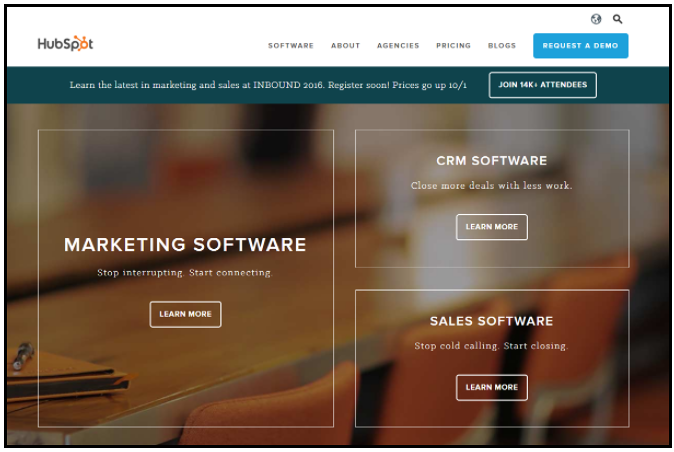
Right away, I’m confused—is HubSpot one product, or three? Is the marketing software their most important or best product because it’s featured more prominently? What kind of marketing is it for—email, social, lead management?
In their redesign, HubSpot needed to address these kinds of confusions and come up with copy that showed the power of using multiple tools together as HubSpot Growth Stack.
Here’s a quick rundown of what they did:
- Internal interviews: The reason behind the redesign was HubSpot’s evolution into Growth Stack. They needed multiple internal perspectives on how the product had changed before they could start writing about it.
- Customer research: Pulling together sales and support teams, HubSpot went over support chat logs, analytics data, user journey maps, call notes, and customer surveys to find recurring questions and pain points that they could proactively address in their copy.
- Custom spreadsheets: When sorting through all this data to produce copy gems, they needed to keep everything organized. HubSpot used spreadsheets to categorize every good quote by pain point, benefit, anxiety, or priority, and track themes as they started to emerge.
Their new copy gets right at the value of Growth Stack:
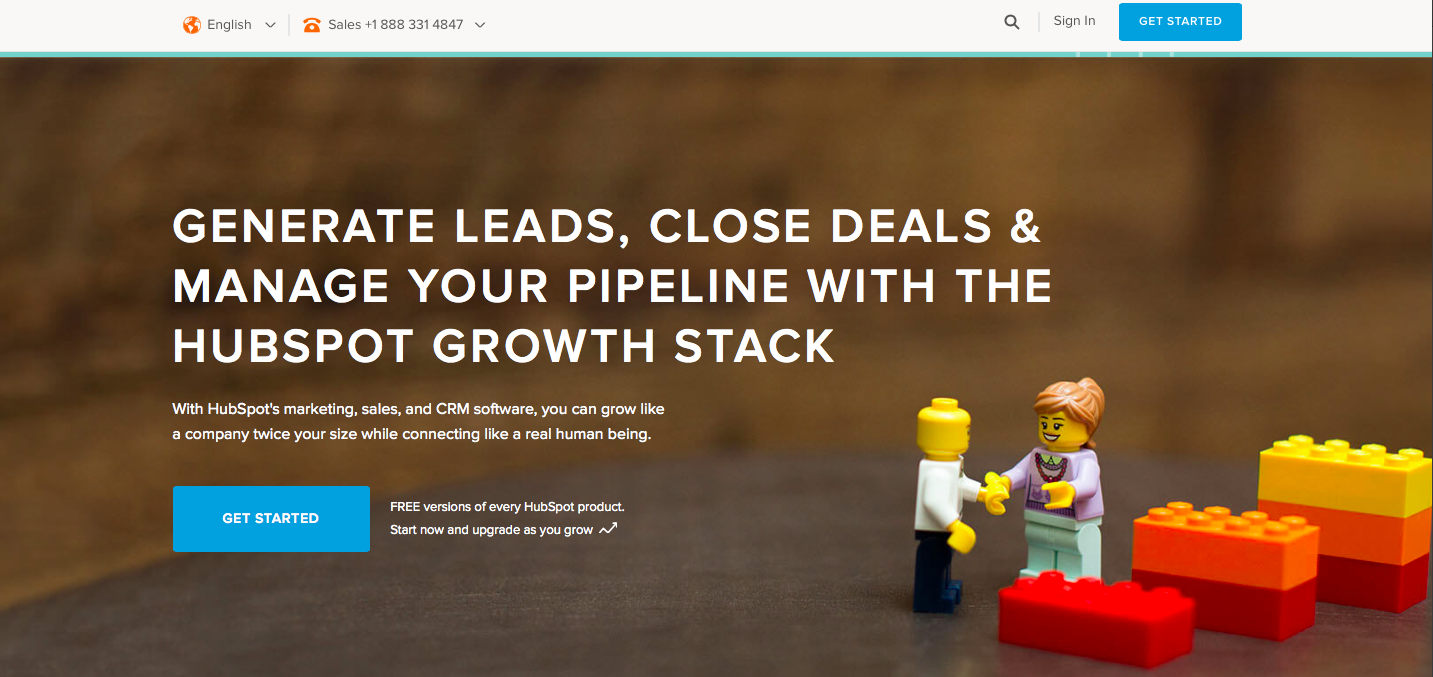
This isn’t a bland description on how Marketing + Sales + CRM = Growth Stack. HubSpot shows you how, when you use all their tools together, “you can grow like a company twice your size.”
Through their redesign process, HubSpot found that the value of Growth Stack wasn’t immediately obvious to most users. By conducting internal interviews and pouring over surveys and chat logs, they discovered the underlying confusion: Are these three separate products? Should I use them together? And if so, how? Their post-audit copy addresses these points of confusion.
The company also paid attention to smaller points of confusion. In one instance, HubSpot saw that people were nervous about compatibility with email providers. So, they added “Works with Gmail and Outlook” under a call-to-action:
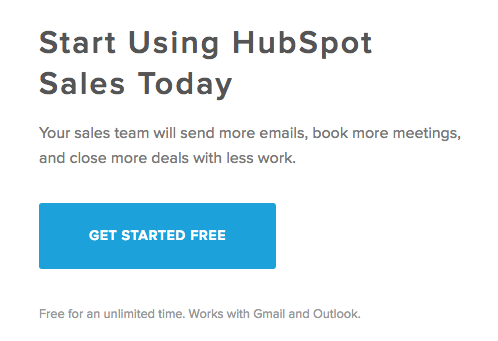
This kind of attention to detail leads to big results. A few weeks after HubSpot’s redesign went live, they saw:
- An overall conversion rate that nearly doubled
- A 35% increase in the volume of demo requests
- A 27% increase in the volume of product signups
Writing great copy isn’t actually about being a seasoned writer. It’s about deeply understanding the needs of your potential users, and the way your product addresses those needs. When product copy reflects that, you’ll inevitably see a difference in your acquisition and retention results.
Turn surveys into good copy
HubSpot is a mature company, with plenty of historical data to draw from. But what if you’re an early-stage startup without a high volume of internal data to work with? Fortunately, a user survey is all you really need to polish your product copy.
When you feel like your users are having problems and you don’t know how tweaking your product copy can help, there’s an easy fix: Go straight to the source. Run a survey.
I’ve run countless surveys for my own companies, but a while back I had the idea to do an open survey with 731 Slack users. I got a group of volunteers together and we coordinated in-depth research on one company, Slack. Then we shared our survey processes and results publicly.
We asked a bunch of open questions, designed to assess product/market fit. And we got some good answers. We asked:
What is the primary benefit that you have received from Slack?
- Escape from email!
- Ubiquitous interconnectivity of everyone in the company.
- Mobile to desktop team chat with nicely integrated bots.
What type of person do you think would benefit most from Slack?
- Any teams but the most clear benefit are to teams that utilize multiple SaaS products and understand the idea of an API.
- Really anyone that works on projects (in any vertical) where team communication is important.
- Anyone who needs to communicate or share with a set group of individuals regardless of their location.
These are great answers to open-ended questions. Just at a glance, we can see keywords like “communication” and “projects and teams” jumping out. This might lead a copywriter toward something like: “Slack, it’s great for communication and teams.”
That’s more or less what Slack went with, for a while:
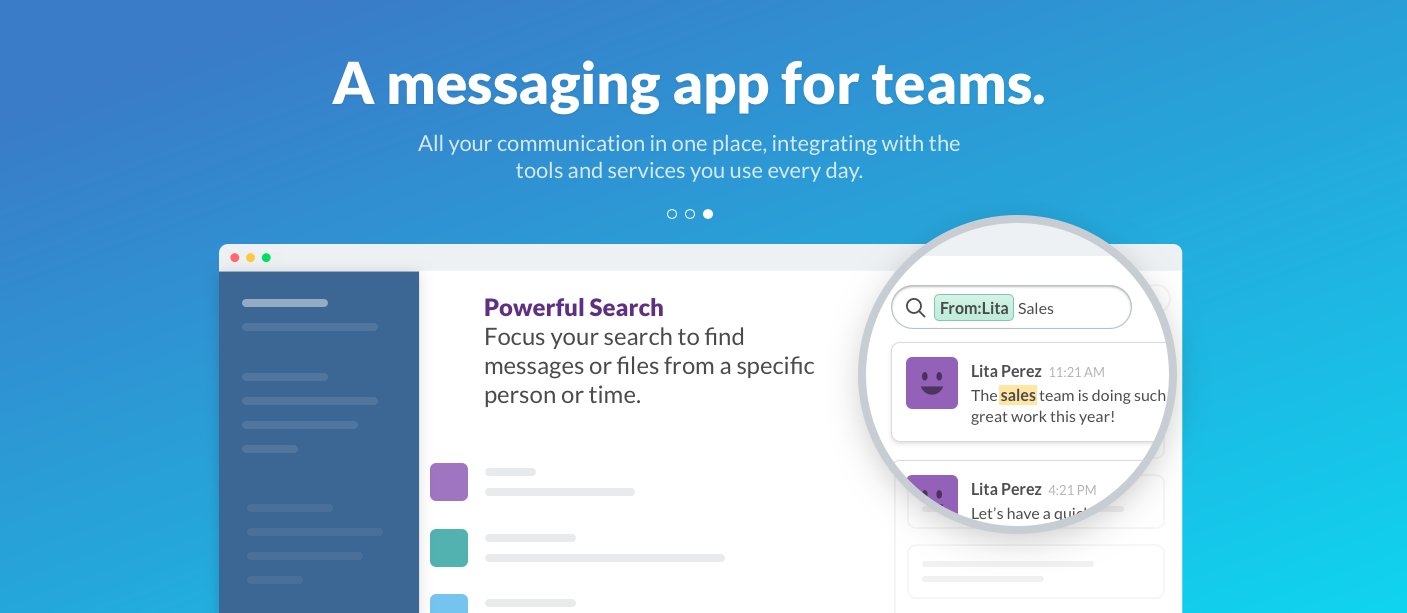
This is okay copy. I’m not confused about the product—I know I can use Slack to message people on my team. The problem here is that there are lots of tools that would allow me to do that—all of Slack’s competitors. Nothing about this copy sets Slack apart and cuts through the noise.
Fast forward to Slack’s current landing page:

This copy isn’t as clear cut as the old version, but it’s also less boring. It manages to distill actual users’ thoughts on Slack in a concise way. “Ubiquitous interconnectivity of everyone in the company” becomes “Bring all the pieces and people you need together.” You just get that Slack is for “anyone that works.”
A survey gives you everything you need to get started. Gathering responses to open-ended survey questions, you get a direct line to the people who actually use your product. Here are some questions you should ask:
- What business challenges made you seek out a product like X?
- Which feature is most important to you?
- How would you feel if you could no longer use X?
- How could X be improved to better meet your needs?
With a survey, you get users’ thoughts in an organized but malleable form. Use their own words and phrases to improve your marketing copy and increase conversions.
Tell a good story, and keep it simple
Few things are less engaging than lengthy explanations of technical features for your product. Technical writing is not going to pull people in as effectively as simple copy and a good story. The best story you can tell with your copy is one about solving people’s problems.
Let’s look at an early version the Appcues site. The copy doesn’t give you a compelling idea of how Appcues will help you acquire highly engaged users:
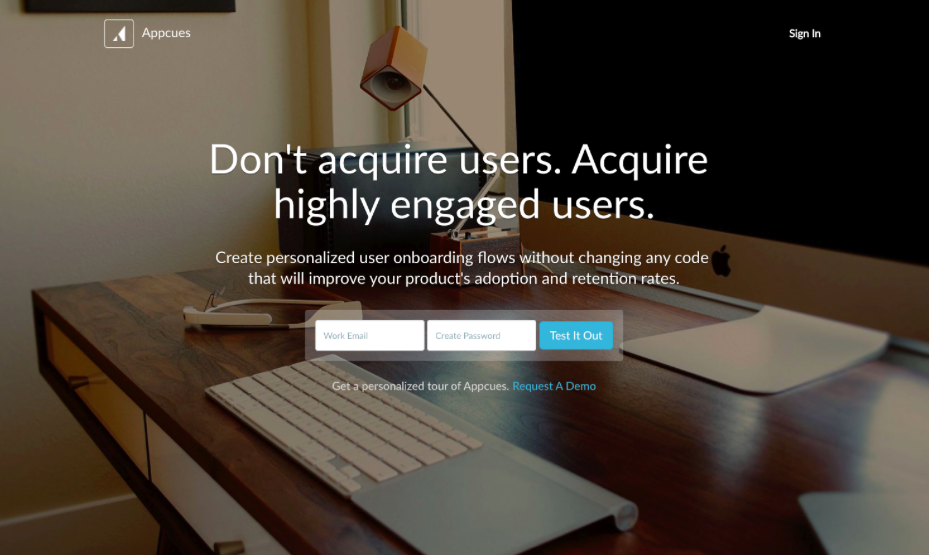
“Acquire highly engaged users” doesn’t tell me anything about how Appcues can solve my problems. Of course I want to acquire users, and I’d prefer them to be highly engaged, but I’m not sure how Appcues can help.
Compare that forgettable product copy to this one:
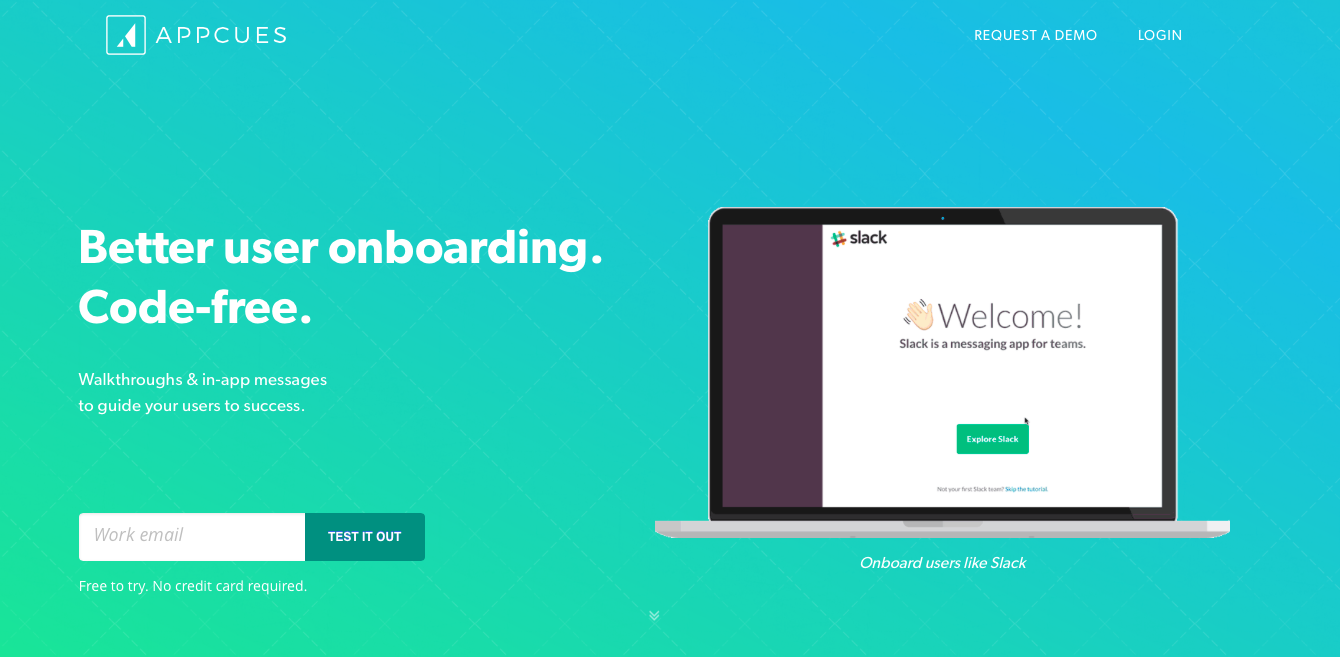
Appcues cut 25 words down to 14. The new copy is much clearer and addresses potential users’ challenges head-on. It appeals directly to a problem product managers are likely to encounter. Don’t know how to code? No problem. Appcues is for anyone who wants to do better user onboarding without writing a line of code.
If you want to avoid jargon-filled drafts and get right into how your product helps people, start with customer testimonials.
This is copy you can source directly from your best customers. Ask them open-ended questions: What do they like best about your product?
Here are some customer stories from Appcues:  If your best customers can’t come back to you with a short, non-technical answer, you have some work to do on your product positioning.
If your best customers can’t come back to you with a short, non-technical answer, you have some work to do on your product positioning.
Simplify your landing page as much as possible to make your message clean and clear. Technical writing has its place—but remember, you can list out every feature and specific detail on another page.
When you focus in on product copy, keep in mind that you’re reaching for the broadest possible audience. You don’t want to bore them with too much jargon or unmemorable stories.
Good copy sets the hook
When a potential new user comes to your site, how are you going to impress them and pull them in with your copy? Are you going to bore and confuse them, or are you going to tell them a good story that illustrates exactly how your product can solve one or multiple problems they have?
Copy is something that is central to product and business growth. It’s not incidental work that you can just ignore or pass off. And you can write strong product copy even if you don’t consider yourself a “writer.” Just remember these rules:
- Good copy leads to acquisition. Remember that copy is often the first thing a user gets from you. There’s a lot they have to read before they even get to a download link or an email sign-up. Make sure you write something that pulls users in.
- Go over user surveys with a fine tooth comb. Look for trends and patterns. If you want to avoid stale copy that sounds like a computer wrote it, start by asking the real people who use your product some open-ended questions.
- Don’t trust your naked eye. Use word clouds to visualize open-ended survey responses and understand them better.
- Write accessibly. Technical writing is almost always an automatic turn-off. You’re trying to hook in the broadest possible audience of people who might find your product useful.
Once you start thinking about copy as part of everything else you do with product, you’ll find that you’re already sitting on gold. Instead of treating copy like an afterthought, dedicate time to finding the right way to position your product from the very beginning. It’ll pay off in spades down the road.
